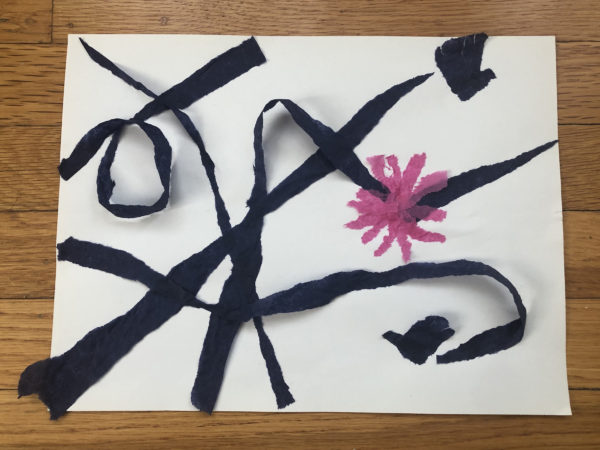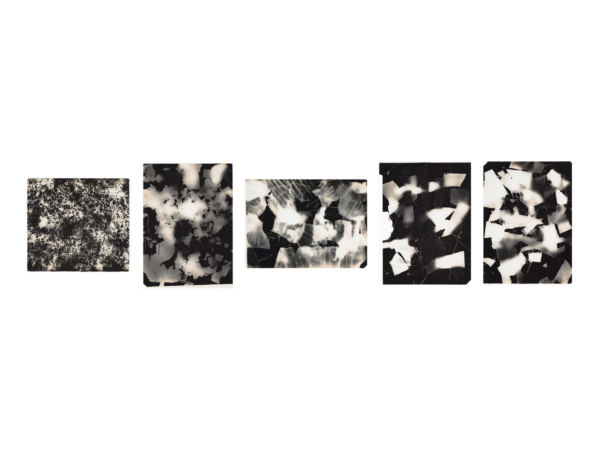Activity
Telling Tales with Kamishibai
Objective: Students will summarize and illustrate the main events of a folktale from Japan in the format of kamishibai slides and retell their stories using their kamishibai slides.

Kamishibai Box (open). Illustrated by Stephanie Kao.
English/Language Arts: Literary Analysis: 3.3.2, 3.3.3, 3.3.4, 5.3.4; Writing 1.6, 1.8; History/Social Science: Historical Interpretation: 2, 3; 7.7.5; 7.5.3; 7.5.6; Visual/Performing Arts: Artistic Perspective 4.12 ;Creative Expression 2.2.1; Artistic Perception 5.4.2; Aesthetic Valuing 5.4.2; Connections, Relationships, Applications 5.5.2; 6.5.3
Materials: Artwork (see “Related Resources” below): Suit of Armor; Video (see “Related Resources” below): Winning Without Hands; Other: Thick construction paper or card stock for kamishibai cards (6-8 per story); Drawing materials (paints, pencils, crayons); Scratch paper and paper for text strips; Envelope or metal rings to secure cards; Optional: tape or glue
Overview:
Japanese Paper Theater (Kamishibai)
In Japan, the tradition of storytelling with art dates back as early as the 9th century when Japanese Buddhist monks would use storytelling scrolls to teach religious stories and lessons to an illiterate public. During the Edo period of peace, and onto the Meiji period, picture storytelling shifted from religious to secular stories as a means of entertainment.
During the early 20th century, picture storytelling, then known as kamishibai became a way to escape from the hardships of war and economic depression. A kamishibai storyteller would typically ride on a bicycle from town to town and tell stories using picture cards in a small theater on his bicycle. It became especially popular during the 1920s because of the growth of the silent film industry, which was actually narrated in Japan, and took on the characteristics of silent film dialogue and stage set aesthetics.
Kamishibai became so popular that television was first called “electric kamishibai.” As kamishibai became less popular, these artist adapted their skills to the popular manga and anime to tell stories.
Procedure:
- Discuss the Suit of Armor:
- Observe and Describe: Look at the suit of armor for at least one minute. What do you notice?
- This armor has the protective deity, Fudo Myoo, painted on the chestplate, and other artistic elements. Armor was often individualized based on rank and alliances. How would you feel if you encountered a warrior wearing this suit of armor?
- What more can you find? (This suit of armor was made for a samurai warrior in Japan.)
- When might you have to wear armor? (This was made during the peaceful Edo period.) Why do you think samurai were still wearing armor even during peaceful times? Look closely at the artistic details. What do you see painted on the front plate? (On the front plate is the Buddhist guardian deity Achala (Japanese: Fudo Myoo) running over rolling waves.) Why might there be a Buddhist deity on armor? What is he doing?
- This image suggests that Fudo is raising his sword and charging to protect the wearer. When do you think it is appropriate to use force?
- Introduce the video of the Japanese story, Winning Without Hands. The story, Winning Without Hands, provides an example of the samurai value of discipline, and teaches us what might happen to people who abuse their power.
- Draw a Conclusion: What messages do you think the story was trying to convey? How might a samurai have interpreted this story? How might a person with less power than a samurai have interpreted this story?
- Connect: Have you ever had an experience where you felt someone abused their power and status? What happened in the end? Did that person get away with their abuse of power?
Procedure to create a Kamishibai
- Recall main events/actions on post-its.
- Order main events, removing those that are secondary to the story. (Tip: Use sentence starters: Once. First. Second. Next. Then. Finally). Revise to include dialogue and sensory details.
- Illustrate one card per post-it, with an emphasis on the setting and main action. Check to see that the drawings correlate with each section of the story.
- Edit and revise each section of the story. Cut out the text strips and losely attach them to the back of the preceding card. Adhere when you are sure they are correctly ordered.
- Place picture cards in order and number the back of the last picture with a 1. This card will have the first part of the text. The first card will have a number 2, and the second text strip. Number the set.
- Tell your story to another small group.
Additional Resources
Kamishibai for Kids: www.kamishibai.com
Story Card Theater: www.storycardtheater.com
Kamishibai.org: www.kamishibai.org






